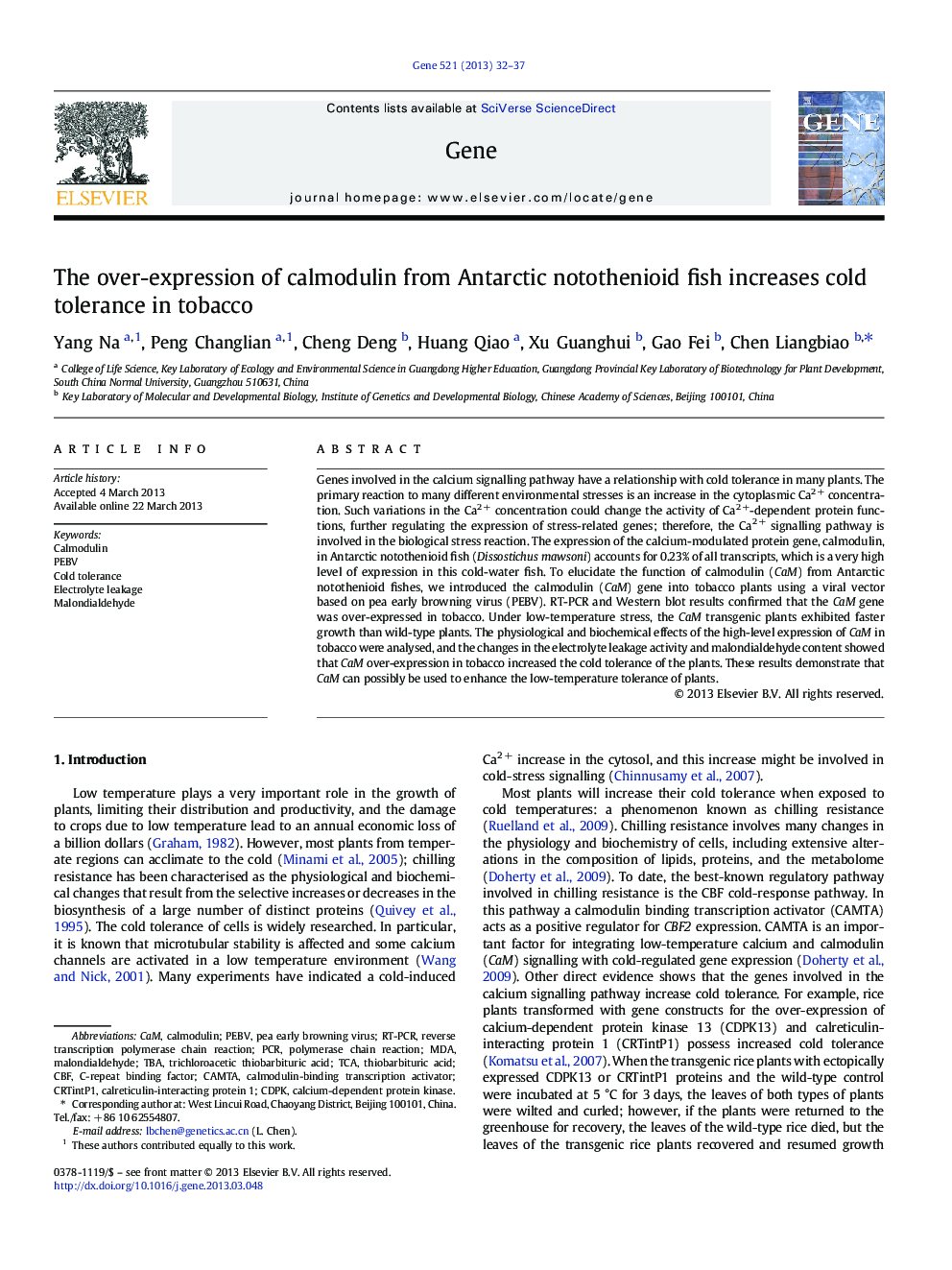| Article ID | Journal | Published Year | Pages | File Type |
|---|---|---|---|---|
| 2817252 | Gene | 2013 | 6 Pages |
•Calmodulin can be used to enhance the low temperature-tolerance of plants.•The PEBV vector can be used to direct the ectopic gene expression in tobaccos.•Our study suggests calcium signalling pathway response to cold stress in plants.
Genes involved in the calcium signalling pathway have a relationship with cold tolerance in many plants. The primary reaction to many different environmental stresses is an increase in the cytoplasmic Ca2 + concentration. Such variations in the Ca2 + concentration could change the activity of Ca2 +-dependent protein functions, further regulating the expression of stress-related genes; therefore, the Ca2 + signalling pathway is involved in the biological stress reaction. The expression of the calcium-modulated protein gene, calmodulin, in Antarctic notothenioid fish (Dissostichus mawsoni) accounts for 0.23% of all transcripts, which is a very high level of expression in this cold-water fish. To elucidate the function of calmodulin (CaM) from Antarctic notothenioid fishes, we introduced the calmodulin (CaM) gene into tobacco plants using a viral vector based on pea early browning virus (PEBV). RT-PCR and Western blot results confirmed that the CaM gene was over-expressed in tobacco. Under low-temperature stress, the CaM transgenic plants exhibited faster growth than wild-type plants. The physiological and biochemical effects of the high-level expression of CaM in tobacco were analysed, and the changes in the electrolyte leakage activity and malondialdehyde content showed that CaM over-expression in tobacco increased the cold tolerance of the plants. These results demonstrate that CaM can possibly be used to enhance the low-temperature tolerance of plants.
